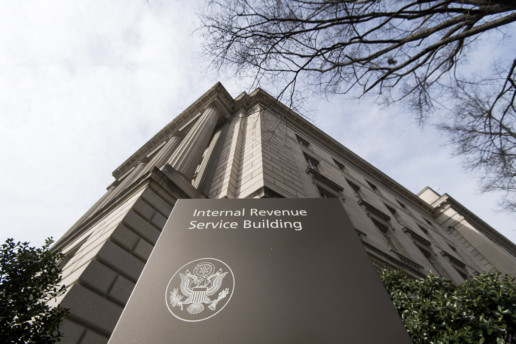2023 Inflation-Adjusted HSA Contributions
Read Time: 7 mins
HIGHLIGHTS
Background Details
On April 29, 2022, the IRS announced health savings account (HSA) contribution limits for 2023. The annual inflation-adjusted amounts demonstrate a notable spike having been increased by approximately 5.5% for 2023 over 2022 versus the 1.4% adjustment that occurred in 2022 over 2021 in response to the recent inflation surge.
The annual inflation-adjusted limit on HSA contributions for self-only coverage will be $3,850, up from $3,650 in 2022. The HSA contribution limit for family coverage will be $7,750, up from $7,300. In Revenue Procedure 2022-24, the IRS confirmed HSA contribution limits effective for calendar year 2023, along with minimum deductible and maximum out-of-pocket expenses for the HDHPs with which HSAs are paired.
HSA Contribution Limit (employer + employee)
Individual: $3,850 (Increase of $200 over 2022)
Family: $7,750 (Increase of $450 over 2022)
HSA Catch-Up Contributions (55+)
$1,000 (No change)
HDHP Minimum Deductibles
Individual: $1,500 (Increase of $100 over 2022)
Family: $3,000 (Increase of $200 over 2022)
HDHP Maximum Out-Of-Pocket (deductibles, co-pays, other amounts excluding premiums)
Individual: $7,500 (increase of $450 over 2022)
Faily: $15,000 (increase of $900 over 2022)
The new 2023 limits can be used by employers during open enrollment to encourage employees to start contributing to their accounts or to increase their current contributions. Employers not currently contributing to their employees' HSAs may want to consider the added benefit of an employer contribution to assist employees with the increased costs of care.
Employers who actively educate their employees on the benefits of HSAs and participate in contributions see increased engagement by employees and enhanced value perception of their health care benefits. Experts have shared a notable increase in employers matching employees' HSA contributions, similar to 401(k) retirement plan matches.
Caveats to Remember
- Exceeding the set contribution limits can result in an annual 6% excise penalty tax on the excess amount unless it is withdrawn from the HSA before the tax deadline for the year.
- Married couples with HSA-eligible family coverage share one family HSA contribution limit. Spouses who each have individual HSAs may contribute up to the Individual maximums in separate accounts.
- 55+ considerations:
- When both spouses are 55+, each may contribute the additional catch-up contribution as long as they have HSA accounts in separate names.
- When one spouse is 55+ and the other is <55, the 55+ spouse must have a separate account in order to contribute the additional allowed catch-up contribution.
ACA Limit Differences
Prompting some confusion for some plan administrators, there are two sets of limits on out-of-pocket expenses. The Department of Health and Human Services (HHS) issues annual out-of-pocket or cost-sharing limits for essential health benefits covered under an ACA_compliant plan (excluding grandfathered plans). The HHS limits for the 2023 annual dollar limits were issued at the end of 2021 and are higher than those set by the IRS. To qualify as an HSA-compatible HDHP, a plan must not exceed the IRS's lower out-of-pocket maximums. Take a look at the comparison:
| 2023 | |
|
HHS (ACA-compliant plans)
Max. out-of-pocket |
Individual: $9,100 (Increase of $350 over 2022)
Family: $18,200 (Increase of $800 over 2022) |
|
IRS (HSA-qualified HDHP plans)
Max out-of-pocket |
Individual: $7,500 (Increase of $450 over 2022)
Family: $15,000 (Increase of $900 over 2022) |
*The ACA's Individual out-of-pocket maximum for essential health benefits applies to each individual in a non-grandfathered group health plan, regardless of whether the individual is enrolled in individual or family coverage.
Excepted-Benefit HRA Maximum
In addition to the above increases, the IRS also raised the maximum amount employers may contribute to an excepted-benefit health reimbursement arrangement (HRA) from the 2022 amount of $1,800 to the new amount for 2023 of $1,950 (a $150 increase).
Steer Clear of Misconceptions About FFCRA Tax Credits
As employers learn about the paid-leave requirements under the Families First Coronavirus Response Act (FFCRA) and corresponding tax credits, misconceptions have arisen related to such details as when to claim the credits and which employers are eligible to claim them.
The FFCRA requires employers with fewer than 500 employees to provide up to 80 hours of emergency paid sick leave and up to 12 weeks—10 of which are paid—of Emergency Family and Medical Leave Expansion Act time off to employees who can't work for specific reasons relating to the COVID-19 pandemic. "Under the FFCRA, the federal government will reimburse employers for the cost of this leave by way of refundable tax credits," said Jim Paretti, an attorney with Littler's Workplace Policy Institute in Washington, D.C.
Eligible employers can claim refundable tax credits under the FFCRA for all or part of the cost of providing qualified paid-sick or family leave taken from April 1 through Dec. 31, noted Dasha Brockmeyer, an attorney with Saul Ewing Arnstein & Lehr in Pittsburgh.
When to File
Some employers believe they must wait until the end of the quarter or end of the year to claim the credits, said Asel Lindsey, an attorney with Dykema in San Antonio.
Eligible employers claim the FFCRA tax credit by retaining payroll taxes—federal income taxes and Social Security and Medicare taxes—that would otherwise be deposited with the IRS, she said. If the retained payroll taxes are insufficient to cover the full amount of the tax credit, employers can file a request with the IRS on Form 7200 for an accelerated payment. Form 7200 can be filed before the end of the month following the calendar quarter in which the qualified sick- or family-leave payments were made.
Nonetheless, the form may not be filed later than the date on which the employer files the Form 941 for the fourth quarter of 2020, which generally is due Jan. 31, 2021, she said.
"If an eligible employer receives tax credits for qualified leave wages, those wages will not be eligible as payroll costs for purposes of receiving loan forgiveness under the CARES [Coronavirus Aid, Relief, and Economic Security] Act," said Carrie Hoffman, an attorney with Foley & Lardner in Dallas.
Additional common misconceptions concern the eligibility for or availability of the FFCRA paid-leave tax credits, according to Robert Delgado, KPMG's principal-in-charge of tax compensation and benefits in San Diego, and Katherine Breaks, KPMG's tax principal in Washington, D.C. They include these incorrect assumptions:
- The group aggregation rules for determining whether an employer is eligible for the paid-leave tax credits under the FFCRA are the same for determining employer eligibility for other COVID-19-related relief, such as the employee retention credit under the CARES Act. While some employers assume that the group aggregation rules used to determine eligibility for the paid-leave tax credits are driven by tax rules, they actually are defined by the labor rules and outlined in U.S. Department of Labor guidance, as the tax credit is secondary to the requirement to provide paid leave. Under these rules, a corporation is typically considered to be a single employer but must be aggregated with another corporation if considered joint employers under the Fair Labor Standards Act rules with respect to certain employees or if they meet the integrated employer test under the Family and Medical Leave Act (FMLA).
- Employers must choose between claiming tax credits for paid leave under the FFCRA or for wages paid to employees under the employee retention credit, but they may not claim both. In fact, eligible employers may receive tax credits available under the FFCRA for required paid leave, as well as the employee retention credit, but not for the same wage payments. Similarly, employers can provide both qualified sick-leave wages and qualified family-leave wages and claim a tax credit for both, but not for the same hours. Employers may not receive a double benefit by claiming a tax credit under Section 45S taking into account the same qualified leave wages.
Other Myths
Delgado and Breaks stated that other misconceptions include the following:
- The tax credit is limited to the qualified wages an employer must pay to an employee under the FFCRA for emergency paid sick leave and expanded FMLA. In fact, the tax credit is generally equal to 100 percent of the qualified wages an employer must pay under the FFCRA for emergency paid sick leave and expanded FMLA increased by the employer's share of Medicare owed on the wages, as well as any qualified health plan expenses.
- An employer may not receive tax credits for FFCRA-required paid leave if it receives a Small Business Administration Paycheck Protection Program loan. Actually, an employer may receive tax credits for paid leave under the FFCRA, as well as a Small Business Administration Paycheck Protection Program loan, but the qualified wages are not eligible as payroll costs for the purposes of loan forgiveness.
- Employers can exclude the amount of the paid-leave tax credit from gross income. In fact, employers must include the full amount of the credits in gross income—that is, qualified leave wages plus any allocable qualified health plan expenses and the employer's share of the Medicare tax on the qualified leave wages. But employers may deduct the amount paid for emergency paid sick leave and expanded FMLA as an ordinary and necessary business expense in the taxable year paid or incurred, including wages for which they expect to take a tax credit.
"If an employer fails to claim a paid-leave tax credit on their Form 941 for the applicable quarter in which the leave wages are paid, the employer can submit a Form 941-X to reflect the corrections, including eligibility for the credit," Delgado and Breaks also noted.
SOURCE: Smith, A. (13 November 2020) "Steer Clear of Misconceptions About FFCRA Tax Credits" (Web Blog Post). Retrieved from https://www.shrm.org/resourcesandtools/legal-and-compliance/employment-law/pages/coronavirus-misconceptions-ffcra-tax-credits.aspx
Millions of U.S. jobs to be lost for years, IRS projections show
It's estimated that there will be about 37.2 million fewer employee-classified jobs in the next year, than there has been in previous years. Read this blog post to learn more.
The Internal Revenue Service projects that lower levels of employment in the U.S. could persist for years, showcasing the economic fallout of the coronavirus pandemic.
The IRS forecasts there will be about 229.4 million employee-classified jobs in 2021 — about 37.2 million fewer than it had estimated last year, before the virus hit, according to updated data released Thursday. The statistics are an estimate of how many of the W-2 tax forms that are used to track employee wages and withholding the agency will receive.
Lower rates of W-2 filings are seen persisting through at least 2027, with about 15.9 million fewer forms filed that year compared with prior estimates. That’s the last year for which the agency has published figures comparing assumptions prior to the pandemic and incorporating the virus’s effects.
W-2s are an imperfect measure for employment, because they don’t track the actual number of people employed. A single worker with several jobs would be required to fill out a form for each position. Still, the data suggest that it could take years for the U.S. economy to make up for the contraction suffered because of COVID-19.
The revised projections also show fewer filings of 1099-INT forms through 2027. That’s the paperwork used to report interest income — and serves as a sign that low interest rates could persist.
There’s one category that is expected to rise: The IRS sees about 1.6 million more tax forms for gig workers next year compared with pre-pandemic estimates.
That boost “likely reflects assumptions with the shift to ‘work from home,’ which may be gig workers, or may just be that businesses are more willing to outsource work — or have the status of their workers be independent contractors — now that they work from home,” Mike Englund, the chief economist for Action Economics said.
SOURCE: Davison, L.; Tanzi, A. (20 August 2020) "Millions of U.S. jobs to be lost for years, IRS projections show" (Web Blog Post). Retrieved from https://www.employeebenefitadviser.com/articles/millions-of-u-s-jobs-to-be-lost-for-years-irs-projections-show
Judge strikes down parts of DOL's emergency paid leave regs
Dive Brief:
- Several features of the U.S. Department of Labor (DOL)'s regulations implementing the paid-leave provisions of the Families First Coronavirus Response Act (FFCRA) exceeded the agency's authority under federal law, a federal judge has ruled (State of New York v. U.S. Department of Labor, et al., No. 20-CV-3020 (S.D.N.Y. Aug. 3, 2020)).
- Among the struck-down DOL regulations are: the final rule's work-availability requirement; its definition of "health care provider" for the purposes of excluding certain healthcare sector employees from emergency leave benefits; its requirement that an employee secure employer consent for intermittent FFCRA leave; and its requirement that documentation be provided by an employee before taking FFCRA leave.
- The federal judge permitted the outright ban on intermittent leave for certain qualifying reasons — specifically, intermittent leave based on qualifying conditions that correspond with an increased risk of infection — as well as the substance of the final rule's documentation requirement to stand. The court, the judge said, "sees no reason that the remainder of the Rule cannot operate as promulgated in the absence of the invalid provisions."
The ruling is an important one for the nation's first-ever federal paid leave law for private-sector workers. New York originally filed the suit in April following the release of DOL's FFCRA implementation guidance earlier in the month. Shortly before the lawsuit's filing, Congressional Democrats criticized DOL's final rule in a letter to Secretary of Labor Eugene Scalia that said the agency's guidance either deviated from the FFCRA's statute or did not have a basis in it.
Asked about the letter, a DOL spokesperson told HR Dive in April that the agency took "quick action to implement paid sick leave and expanded paid family and medical leave provides necessary support for America's workforce in uncertain times."
The federal judge said in the ruling that DOL faced "considerable pressure" in promulgating its final rule. "This extraordinary crisis has required public and private entities alike to act decisively and swiftly in the face of massive uncertainty, and often with grave consequence," the judge noted. "But as much as this moment calls for flexibility and ingenuity, it also calls for renewed attention to the guardrails of our government. Here, DOL jumped the rail."
Management-side attorneys expect the ruling to be appealed, Bloomberg Law reported. The decision applies nationally, creates uncertainty for employers who experienced pandemic-related shutdowns or reductions in force and requires healthcare employers to "re-examine whether they must provide paid leave" to certain employees, Sami Assad, partner at FordHarrison LLP and chair of the firm's Home Healthcare Practice Group, wrote in an article.
The FFCRA applies to U.S. employers with fewer than 500 employees, but those with fewer than 50 employees may be exempt from two of the law's paid-leave requirements. An authorized officer of the business must use a three-prong test to determine whether the employer may claim an exemption. Also, the IRS has published guidance detailing how small businesses can receive 100% reimbursement for paid leave pursuant to the FFCRA.
SOURCE: Golden, R. (04 August 2020) "Judge strikes down parts of DOL's emergency paid leave regs" (Web Blog Post). Retrieved from https://www.hrdive.com/news/new-york-judge-strikes-down-dol-emergency-paid-leave-reg/582856/
IRS promises full, immediate reimbursement for coronavirus leave
As employers are becoming subjected to the Families First Coronavirus Response Act (FFCRA), questions regarding reimbursements are being raised. Read this blog post to learn more.
Dive Brief:
- Employers subject to the Families First Coronavirus Response Act (FFCRA) will be eligible for two new refundable payroll tax credits that will "immediately and fully reimburse them" for complying with its paid leave mandate, the IRS and U.S. Department of Labor (DOL) announced March 20.
- The credits are designed to grant 100% reimbursement for paid leave pursuant to the FFCRA, DOL said. Health insurance costs are included in the credit. Employers face no tax liability and self-employed individuals will receive an equivalent credit. For the law's emergency Family and Medical Leave Act (FMLA) leave, the credit is equal to two-thirds of the employee's regular pay, capped at $200 per day or $10,000 in the aggregate. Up to 10 weeks of qualifying leave can be counted towards the credit.
- The credit available for FFCRA's paid sick time differs depending on how an employee uses the time. If the employee is unable to work because of a quarantine or self-quarantine or has COVID-19 symptoms and is seeking a medical diagnosis, employers may receive a refundable sick leave credit for sick leave at the employee's regular rate of pay, up to $511 per day and $5,110 in the aggregate, for a total of 10 days. If the employee is caring for someone with COVID-19, or is caring for a child because the child's school or child care facility is closed or otherwise unavailable due to COVID-19, employers may claim a credit for two-thirds of the employee's regular rate of pay, up to $200 per day and $2,000 in the aggregate, for up to 10 days.
Dive Insight:
The announcement, made in conjunction with the U.S. Department of the Treasury, should be welcome news to employers affected by the FFCRA, Littler Mendelson shareholder Jeff Nowak told HR Dive in an interview.
Reacting to initial news of the law's enactment, Nowak and others expressed concerns. Though the FFCRA specified that employers would be eligible to receive tax credits, Nowak said this week that many feared the timing of the credit would be "far too late … particularly for small businesses that would be out of business by this time next year." The DOL's assurance of prompt payment may ease such fears.
As news continues to develop around the FFCRA, DOL has added additional clarifications for employers to note. First, the agency stated Tuesday that the FFCRA would be implemented April 1, 2020. In the same document, it added more information around its plan to codify exemptions for certain private entities employing fewer than 50 employees. Employers choosing to seek this exemption may need to document why their business meets the criteria for an exemption. These criteria will be set forth by DOL in future regulations.
"You should not send any materials to the Department of Labor when seeking a small business exemption for paid sick leave and expanded family and medical leave," DOL said.
The agency also previously announced that it would observe a 30-day temporary period of non-enforcement of the FFCRA once the law takes effect April 1. This non-enforcement would be in effect so long as the employer in question "has acted reasonably and in good faith" to comply with the law, DOL said, but sources previously told HR Dive that employees could still bring legal action against certain non-complying employers.
Nowak noted that the tax credit provision would allow employers to recoup the maximum paid leave costs provided for by the FFCRA. In other words, if an employer provides additional paid leave beyond what is mandated by the FFCRA for a given scenario, that employer should not expect to receive a reimbursement for the cost of providing those additional amounts of leave, Nowak said.
The DOL document released Tuesday also specifies how employers should determine whether they meet the FFCRA's classification of employing fewer than 500 employees. According to Nowak, employers should look at their headcount at the time an employee requests leave. "It will be an additional burden to the employer's HR department," Nowak said. "You will be calculating coverage whenever an employee requests FMLA or paid sick leave."
DOL said it will provide a model notice of the FFCRA's requirements — which employers will then need to post in a conspicuous place on their premises — no later than March 25. Finally, the agency has said it will hold a "national online dialogue" allowing employers to comment on the DOL's compliance materials and outreach strategies related to the implementation of the FFCRA through March 29.
SOURCE: Golden, R. (25 March 2020) "IRS promises full, immediate reimbursement for coronavirus leave" (Web Blog Post). Retrieved from https://www.hrdive.com/news/irs-promises-full-immediate-reimbursement-for-coronavirus-leave/574881/
Saver's Credit Can Spur Retirement Plan Contributions
Many employees are not aware of employer-sponsored retirement accounts, or individual retirement accounts (IRA), which could be costing those more money. Tax season is the best time for employers to educate their employees on how they can earn extra tax credits through their 401(k) plans. Read this blog post to learn more about how to educate employees on what retirement account opportunities that are available to them.
Many workers don't know that they're eligible for a tax credit by saving in an employer-sponsored retirement plan or individual retirement account (IRA)—and that could be costing them money. Tax time, however, is prime time for employers to inform eligible workers about the saver's credit.
The Retirement Savings Contributions Credit, or saver's credit, is available to low- and moderate-income workers who are putting money aside for retirement. But only 29 percent of workers with annual household income below $50,000 know about the saver's credit, according to the nonprofit Transamerica Center for Retirement Studies in Los Angeles, which surveyed nearly 6,000 employees last fall.
"Tax season is an ideal time to tell eligible workers how they can earn extra tax credits by saving through their employer's 401(k) or a similar retirement plan," said Catherine Collinson, president of the Transamerica Center. "The saver's credit might just be the motivator for those not yet saving for retirement to get started."
Scott Spann, a senior financial planner with Financial Finesse, a provider of workplace financial wellness programs in Charleston, S.C., said, "Saving for retirement is a challenge for many households in America. Special tax incentives help make the process of saving easier."
What Is the Saver's Credit?
Like other tax credits, the saver's credit can increase a taxpayer's refund or reduce the tax owed. Here's how it works:
The amount of the credit is a maximum of 50 percent of an employee's retirement plan contributions up to $2,000 (or $4,000 for married couples filing jointly), depending on the filer's adjusted gross income as reported on Form 1040. Consequently, the maximum saver's credit is $1,000 (or $2,000 for married couples filing jointly).
The saver's credit "is different than a tax deduction due to the fact that a tax credit is a dollar-for-dollar reduction of your gross tax liability, which is the total amount of taxes you're responsible for paying before any credits are applied," Spann explained.
The saver's credit also differs from the separate tax benefit of contributing pretax dollars to a qualified retirement plan, such as an employer-sponsored 401(k) or an IRA. "Many eligible retirement savers may be confusing these two incentives because the notion of a double tax benefit"—pretax contributions and an additional tax credit—"seems too good to be true," Collinson said.
Who Can Claim the Saver's Credit?
The credit is available to workers age 18 or older who have contributed to a company-sponsored retirement plan or an IRA in the past year and meet the income requirements shown in the table below. The filer cannot be a full-time student nor claimed as a dependent on another person's tax return.
Income Caps for Tax Years 2019 and 2020
For eligible workers, the amount of the available tax credit diminishes as adjusted gross income (AGI) rises. To help preserve the credit's value, income thresholds are adjusted annually to keep pace with inflation. Below are the AGI caps for tax year 2019 (for tax returns filed this year) and 2020 (for returns filed next year).
| 2019 Saver's Credit | |||
| Tax Credit Rate | Single Filers and Married, Filing Separately* | Married, Filing Jointly | Heads of Household |
| 50% of contribution | AGI not more than - $19,250 | AGI not more than $38,500 | AGI not more than $28,875 |
| 20% of contribution | AGI of $19,251 - $20,750 | AGI of $38,501 - $41,500 | AGI of $28,876 - $31,125 |
| 10% of contribution | AGI of $20,751- $32,000 | AGI of $41,501 - $64,000 | AGI of $31,126 - $48,000 |
| No credit | AGI more than $32,000 | AGI more than $64,000 | AGI more than $48,000 |
| 2020 Saver's Credit | |||
| Tax Credit Rate | Single Filers and Married, Filing Separately* | Married, Filing Jointly | Heads of Household |
| 50% of contribution | AGI not more than $19,500 | AGI not more than $39,000 | AGI not more than $29,250 |
| 20% of contribution | AGI of $19,501 - $21,250 | AGI of $39,001 - $42,500 | AGI of $29,251 - $31,875 |
| 10% of contribution | AGI of $21,251 - $32,500 | AGI of $42,501 - $65,000 | AGI of $31,876 - $48,750 |
| No credit | AGI more than $32,500 | AGI more than $65,000 | AGI more than $48,750 |
Deadlines for Retirement Contributions
"You must make eligible contributions to your employer-sponsored retirement plan or IRA for the tax year for which you are claiming the income tax credit," Spann said.
While 401(k) contributions for a tax year can be made only up to Dec. 31, those who are eligible but did not save last year can still make a tax year 2019 IRA contribution until April 15, 2020.
Filing for the Saver's Credit
Employers can advise eligible workers to take the following steps to claim the saver's credit, according to the Transamerica Center:
- If using tax-preparation software, including those programs offered through the IRS Free File program, use Form 1040 or Form 1040NR for nonresident aliens. Answer questions about the saver's credit, which may be referred to as the Retirement Savings Contributions Credit or the Credit for Qualified Retirement Savings Contributions.
- If preparing tax returns manually, complete Form 8880, Credit for Qualified Retirement Savings Contributions, to determine your exact credit rate and amount. Then transfer the amount to the designated line on Form 1040 (Schedule 3) or Form 1040NR.
- If using a professional tax preparer, ask about the saver's credit.
Financial planners advise having tax refunds directly deposited into an IRA to further boost your retirement savings.
The Transamerica Center has additional information, in English and Spanish, on its Saver's Credit webpage, along with a downloadable fact sheet.
IRS Free File Program Is Available
Another potentially overlooked opportunity for workers is the IRS Free File program, which offers federal income tax preparation software at no charge to tax filers with an AGI of $69,000 or less.
Free File opened on Jan. 10, 2020, for the preparation of 2019 tax returns. Eligible taxpayers can do their taxes now, and the Free File provider will submit the return once the IRS officially opens the tax filing season on Jan. 27.
For 2020, the Free File partners are: 1040Now, Inc., ezTaxReturn.com (English and Spanish), FileYourTaxes.com, Free tax Returns.com, H&R Block, Intuit, On-Line Taxes, Inc., Tax ACT, TaxHawk, Inc. and TaxSlayer (English and Spanish).
Here's how Free File works:
- Taxpayers go to IRS.gov/FreeFile to see all Free File options.
- They browse each of the offers or use a "look up" tool to help find the right product. Each Free File partner sets its own eligibility standards generally based on income, age and state residency. But if the taxpayer's adjusted gross income was $69,000 or less, they will find at least one free product to use.
- They select a provider and follow the links to their web page to begin a tax return.
- They complete and e-File a tax return if they have all the income and deduction records they need. The fastest way to get a refund is by filing electronically and selecting direct deposit. For taxes owed, they can use direct pay or electronic options.
Many Free File online products also offer free state tax preparation, although some charge a state fee. Taxpayers should read each provider's information carefully.
"The IRS has worked to improve the program for this year, and we encourage taxpayers to visit IRS.gov, and consider using the Free File option to get a head start on tax season," said IRS Commissioner Chuck Rettig.
Nearly 57 million returns have been filed through the Free File program since it began in 2003, and 70 percent of U.S. taxpayers (about 100 million people) are eligible for Free File, according to the IRS.
SOURCE: Miller, S. (10 January 2020) "Saver's Credit Can Spur Retirement Plan Contributions" (Web Blog Post). Retrieved from https://www.shrm.org/resourcesandtools/hr-topics/benefits/pages/remind-low-wage-earners-about-savers-credit.aspx
IRS increases retirement contributions for 2020
Recently, the Internal Revenue Service (IRS) announced that workers contributing to 401(k), 403(b), 457 and the federal government’s Thrift Savings Plans will be able to add up to $19,500 in 2020. Read this blog post to learn more about this increase in retirement contributions.
The IRS said this week that workers contributing to 401(k), 403(b), 457 and the federal government’s Thrift Savings Plans plans can add $19,500 next year, an increase from $19,000 in 2019.
The move could help workers save more for retirement, but it may be inconvenient for employers who’ve already started open enrollment, experts say. Employees are now able to set aside $500 more for retirement.
“Every penny counts when you’re saving for retirement, and the higher contribution limit is definitely going to help,” says Jacob Mattinson, partner at McDermott, Will & Emery, a Chicago-based law firm. “But since companies are in the midst of open enrollment, employers may have to go back in and change the entries for employees who want to contribute the max.”
There are about 27.1 million 401(k) plan participants using roughly 110,794 employer-sponsored 401(k) plans, the Employee Benefit Research Institute says. Ninety-three percent of employers offer a 401(k) plan, and around 74% of companies match workers’ contributions, according to data from the Society for Human Resource Management.
While the vast majority of employers do offer retirement savings plans, employees may still be struggling to sock away money. Around 70% of workers say debt has negatively impacted their ability to save for retirement, EBRI says.
“Thirty-two percent of workers with a major debt problem are not at all confident about their prospects for a financially secure retirement, compared with 5% of workers without a debt problem,” says Craig Copeland, EBRI senior research associate.
The IRS also upped contribution limits on Savings Incentive Match Plan for Employees plans, or SIMPLE retirement accounts, to $13,500 from $13,000. The agency did not change the contribution limits to IRAs, which remain at $6,000 annually.
SOURCE: Hroncich, C. (7 November 2019) "IRS increases retirement contributions for 2020" (Web Blog Post). Retrieved from https://www.benefitnews.com/news/irs-increases-retirement-contributions-for-2020
IRS updates rules on retirement plan hardship distributions
Recently, the Internal Revenue Service (IRS) finalized updates to the hardship distribution regulations. These new regulations make the requirements more flexible and participant friendly. Read this blog post to learn more about these updated regulations.
Employers who allow for hardship distributions from their 401(k) or 403(b) plans should be aware that the Internal Revenue Service recently finalized updates to the hardship distribution regulations to reflect legislative changes. The new rules make the hardship distribution requirements more flexible and participant-friendly.
Hardship distributions are in-service distributions from 401(k) or 403(b) plans that are available only to participants with an immediate and heavy financial need. Plans are not required to offer hardship distributions. But there are certain requirements if a plan does offer hardship distributions. Generally, a hardship distribution may be made to a participant only if the participant has an immediate and heavy financial need, and the distribution is necessary and not in excess of the amount needed (plus related taxes or penalties) to satisfy that financial need.
An administrator of a 401(k) or 403(b) plan can determine whether a participant satisfies these requirements based on all of the facts and circumstances, or the administrator may rely on certain tests that the IRS has established, called safe harbors.
Over the last fifteen years, Congress has changed the laws that apply to hardship distributions. The new rules align existing IRS regulations with Congress’s legislative changes. Some of the changes are mandatory and some are optional. The new rules make the following changes. The following changes are required.
Elimination of six-month suspension.
Employers may no longer impose a six-month suspension of employee elective deferrals following the receipt of a hardship distribution.
Required certification of financial need.
Employers must now require participants to certify in writing or by other electronic means that they do not have sufficient cash or liquid assets reasonably available, in order to satisfy the financial need and qualify for a hardship distribution.
There were also some optional changes made to hardship distributions.
Removal of the requirement to take a plan loan.
Employers have the option, but are not mandated, to eliminate the requirement that participants take a plan loan before qualifying for a hardship distribution. In order to qualify for a hardship distribution, participants are still required to first take all available distributions from all of the employer’s tax-qualified and nonqualified deferred compensation plans to satisfy the participant’s immediate and heavy financial need. The optional elimination of the plan loan requirement may first apply beginning January 1, 2019.
Expanded safe harbor expenses to qualify for hardship.
The new hardship distribution regulations expand the existing list of pre-approved expenses that are deemed to be an immediate and heavy financial need. Prior to the new regulations, the list included the following expenses:
- Expenses for deductible medical care under Section 213(d) of the Internal Revenue Code;
- Costs related to the purchase of a principal residence;
- Payment of tuition and related expenses for a spouse, child, or dependent;
- Payment of amounts to prevent eviction or foreclosure related to the participant’s principal residence;
- Payments for burial or funeral expenses for a spouse, child, or dependent; and
- Expenses for repair of damage to a principal residence that would qualify for a casualty loss deduction under Section 165 of the Internal Revenue Code.
The new regulations expand this list of permissible expenses by adding a participant’s primary beneficiary under the plan as a person for whom medical, tuition and burial expenses can be incurred. The new regulations also clarify that the immediate and heavy financial need for principal residence repair and casualty loss expenses is not affected by recent changes to Section 165 of the Internal Revenue Code, which allows for a deduction of such expenses only if the principal residence is located in a federally declared disaster zone. Finally, the new regulations add an additional permissible financial need to the list above for expenses incurred due to federally declared disasters.
New contribution sources for hardships.
The law and regulations provide that employers may now elect to allow participants to obtain hardship distributions from safe harbor contributions that employers use to satisfy nondiscrimination requirements, qualified nonelective elective contributions (QNECS), qualified matching contributions (QMACs) and earnings on elective deferral contributions. However, 403(b) plans are not permitted to make hardship distributions from earnings on elective deferrals, and QNECS and QMACs are distributable as hardship distributions only from 403(b) plans not held in a custodial account.
As this list indicates, the new regulations make substantial changes to the hardship distribution rules.
The deadline for adopting this amendment depends on the type of plan the employer maintains and when the employer elects to apply the changes. Plan sponsors should work with their document providers and legal counsel to determine the specific deadlines for making amendments.
SOURCE: Tavares, L. (01 November 2019) "IRS updates rules on retirement plan hardship distributions" (Web Blog Post). Retrieved from https://www.benefitnews.com/opinion/irs-updates-rules-on-401k-403b-plan-hardship-distributions
How 401(k) Taxes Work and How to Minimize the Tax Bill
Are you familiar with how 401(k) taxes work? Most 401(k) plans are tax-deferred, meaning that you won't pay income taxes until you withdraw the money you've put into your 401(k). Read this blog post for an overview of how these taxes work.
Most 401(k) plans are tax-deferred, which means you don’t pay income tax on the money you put into the account until you withdraw it. That makes the 401(k) not just a way to save for retirement; it’s also a great way to cut your tax bill. But there are a few rules about 401(k) taxes to know, as well as a few strategies that can get your tax bill even lower.
Here’s an overview of how 401(k) taxes work and how to pay less tax when the IRS asks for a cut of your retirement savings.
How do 401(k) taxes on contributions work?
Contributions to a traditional 401(k) plan come out of your paycheck before the IRS takes its cut. So if you earn $1,000 before taxes at work and you contribute $200 of it to your 401(k), that’s $200 less that you’ll be taxed on. When you file your tax return, you’d report $800 rather than $1,000.
- If your employer offers a Roth 401(k), that means you contribute after-tax money instead of pre-tax money as with the traditional 401(k). This has a few advantages (see the section about withdrawals).
- You still have to pay Medicare and Social Security taxes on your payroll contributions to a 401(k).
- In 2019, you can contribute up to $19,000 a year to a 401(k) plan, which means you can shield $19,000 a year from income taxes. If you’re 50 or older, you can contribute $25,000 in 2019.
- The annual contribution limit is per person, and it applies to all of your traditional or Roth 401(k) contributions in total.
- Your employer will send you a W-2 in January that shows how much it paid you during the previous calendar year, as well as how much you contributed to your 401(k) and how much withholding tax you paid.
Do 401(k) taxes apply while your money is in the account?
While money is in a traditional 401(k), you pay no taxes on investment gains, interest or dividends. This is true for a Roth 401(k), as well.
Roth 401(k) vs. Traditional 401(k)
| Traditional 401(k) | Roth 401(k) | |
| Tax treatment of contributions | Contributions are made pre-tax, which reduces your current adjusted gross income. | Contributions are made after taxes, with no effect on current adjusted gross income. Employer matching dollars must go into a pre-tax account and are taxed when distributed. |
| Tax treatment of withdrawals | Distributions in retirement are taxed as ordinary income. | No taxes on qualified distributions in retirement. |
| Withdrawal rules | Withdrawals of contributions and earnings are taxed. Distributions may be penalized if taken before age 59½, unless you meet one of the IRS exceptions. | Withdrawals of contributions and earnings are not taxed as long as the distribution is considered qualified by the IRS: The account has been held for five years or more and the distribution is:
Unlike a Roth IRA, you cannot withdraw contributions at any time. |
How do 401(k) taxes apply to withdrawals?
In technical terms, your contributions and the investment growth in a traditional 401(k) are tax-deferred — that is, you don’t pay taxes on the money until you make withdrawals from the account. At that point, you’ll owe income taxes to Uncle Sam. If you’re in a Roth 401(k), in most cases you won’t owe any taxes at all when you withdraw the money because you will have already paid the taxes upfront.
401(k) taxes if you withdraw the money in retirement
- For traditional 401(k)s, the money you withdraw is taxable as regular income — like income from a job — in the year you take the distribution (remember, you didn’t pay income taxes on it back when you put it in the account; now it’s time to pay the piper).
- For Roth 401(k)s, the money you withdraw is not taxable (you already paid the income taxes on it back when you put the money in the account).
- You can begin withdrawing money from your traditional 401(k) without penalty when you turn age 59½.
- You can begin withdrawing money from your Roth 401(k) without penalty once you’ve held the account for at least five years and you’re at least 59½.
- If you’ve retired, you have to start taking required minimum distributions from your account starting on April 1 of the year following the year in which you turn 70½.
- If you’re still working at age 70½, you can put off taking distributions from your traditional 401(k).
- If you don’t take the required minimum distribution when you’re supposed to, the IRS can assess a penalty of 50% of the amount not distributed.
- You can withdraw more than the minimum.
401(k) taxes if you withdraw the money early
For traditional 401(k)s, there are three big consequences of an early withdrawal or cashing out before age 59½:
- Taxes will be withheld. The IRS generally requires automatic withholding of 20% of a 401(k) early withdrawal for taxes. So if you withdraw the $10,000 in your 401(k) at age 40, you may get only about $8,000.
- The IRS will penalize you. If you withdraw money from your 401(k) before you’re 59½, the IRS usually assesses a 10% penalty when you file your tax return. That could mean giving the government another $1,000 of that $10,000 withdrawal.
- You may have less money for later, especially if the market is down when you start making withdrawals. That could have long-term consequences.
There are a lot of exceptions. This article has more details, but in a nutshell, you might be able to escape the IRS’s 10% penalty for early withdrawals from a traditional 401(k) if you:
- Receive the payout over time.
- Qualify for a hardship distribution with the plan administrator.
- Leave your job and are over a certain age.
- Are getting divorced.
- Are or become disabled.
- Put the money in another retirement account.
- Use the money to pay an IRS levy.
- Use the money to pay certain medical expenses.
- Were a disaster victim.
- Overcontributed to your 401(k).
- Were in the military.
- Die.
You can withdraw money from a Roth 401(k) early if you’ve held the account for at least five years and need the money due to disability or death.
7 quick tips to minimize 401(k) taxes
- Wait as long as you can to take money out of your account. Withdrawals are what can trigger taxes.
- If you must make an early withdrawal from a 401(k), see if you qualify for an exception that will help you avoid paying an early withdrawal penalty.
- See if you qualify for the Saver’s Credit on your contributions.
- Be careful with how you roll over your account. Rolling an old 401(k) account into another 401(k) or into an IRA usually won’t trigger taxes — if you get the money into the new account within 60 days. Otherwise, the IRS might consider the move a distribution, triggering taxes and maybe even a penalty.
- Borrow from your 401(k) instead of making an early withdrawal. Not all 401(k) plans offer loans, though. Also, in most circumstances you’ll need to repay the loan within five years and make regular payments. Check with your plan administrator for the rules.
- Use tax-loss harvesting. You might be able to offset the taxes on your 401(k) withdrawal by selling underperforming securities at a loss in some other regular investment account you might have. Those losses can offset some or all of the taxes on your 401(k) withdrawal.
- See a tax professional. There are other ways to minimize your 401(k) taxes, too, so find a qualified tax pro and discuss your options.
SOURCE: Orem, T. (19 September 2019) "How 401(k) Taxes Work and How to Minimize the Tax Bill" (Web Blog Post). Retrieved from https://www.nerdwallet.com/blog/taxes/401k-taxes/
A 401(k) plan administrators’ guide to the recent IRS revenue ruling
The IRS recently released a new revenue ruling that provides 401(k) plan administrators with helpful guidance on reporting and withholding from 401(k) plan distributions. Read the blog post below to learn more about this new ruling.
The IRS recently issued revenue ruling 2019-19. The revenue ruling provides 401(k) plan administrators with helpful guidance on how to report and withhold from 401(k) plan distributions when a plan participant actually receives the distribution but for some reason, does not cash the check.
Unfortunately, this new guidance does not provide answers to the complex issues that 401(k) plan administrators face when the plan must make a distribution, but the plan participant is missing.
Let’s hope revenue ruling 2019-19 is just the first in a series of much-needed guidance from the IRS and the Department of Labor about how 401(k) plan administrators should handle the increasingly common administrative issues related to uncashed checks and missing plan participants.
There are many situations in which a 401(k) plan must make a distribution to a plan participant. For example, plans must distribute small benefit cash outs (e.g., account balances that are $1,000 or less) or required minimum distributions to plan participants who reach age 70 and a half. This may come as a surprise, but plan participants fail to actually cash these checks with some regularity.
In the ruling, the IRS confirmed that 401(k) plan administrators should withhold taxes on a 401(k) plan distribution and report the distribution on a Form 1099-R in the year the check is distributed to the participant, even if the participant does not cash the check until a later year.
Similarly, the participant needs to include the plan distribution as taxable income in the year in which the plan makes the distribution even if the participant fails to cash the check until a later year. While this guidance is not surprising, it does provide clarity to 401(k) plan administrators as to how they must withhold and report normal course and required plan distributions. In particular, 401(k) plan administrators should not reverse the tax withholding or reporting of the distribution when the participant receives the distribution and simply does not cash the check until a later year.
Unfortunately, this new IRS guidance has limited use because the ruling uses an example that specifically concedes that the plan participant actually received the plan distribution check, but simply failed to cash it. What should 401(k) plan administrators do when the participant may not have received the distribution check at all (e.g., a check is returned for an invalid address) or the plan itself does not have current contact information for the participant?
Retirement plan administrators have an ERISA fiduciary obligation to implement a diligent and prudent process to find missing plan participants and to take additional steps to make sure participants actually receive plan distributions. Uncashed 401(k) plan distribution checks are still retirement plan assets which means the 401(k) plan administrator is still subject to ERISA fiduciary standards of care, prudence and diligence related to those amounts. As a result, the IRS and DOL have increased their focus on uncashed checks and missing participants in retirement plan audits.
Plan administrators would be well-served by establishing and implementing a consistent process to stay on top of any missing plan participants or uncashed checks and taking steps to locate those participants and properly address uncashed checks. Plan administrators should also carefully document the steps that they take in this regard. The IRS and DOL have currently provided limited guidance on the steps a 401(k) plan administrator can take to locate missing participants, but more guidance is needed — let’s hope revenue ruling 2019-19 is just the beginning.
This article originally appeared on the Foley & Lardner website. The information in this legal alert is for educational purposes only and should not be taken as specific legal advice.
SOURCE: Dreyfus Bardunias, K. (6 September 2019) "A 401(k) plan administrators’ guide to the recent IRS revenue ruling" (Web Blog Post). Retrieved from https://www.benefitnews.com/opinion/401k-administrators-guide-to-the-irs-revenue-ruling-2019-19










